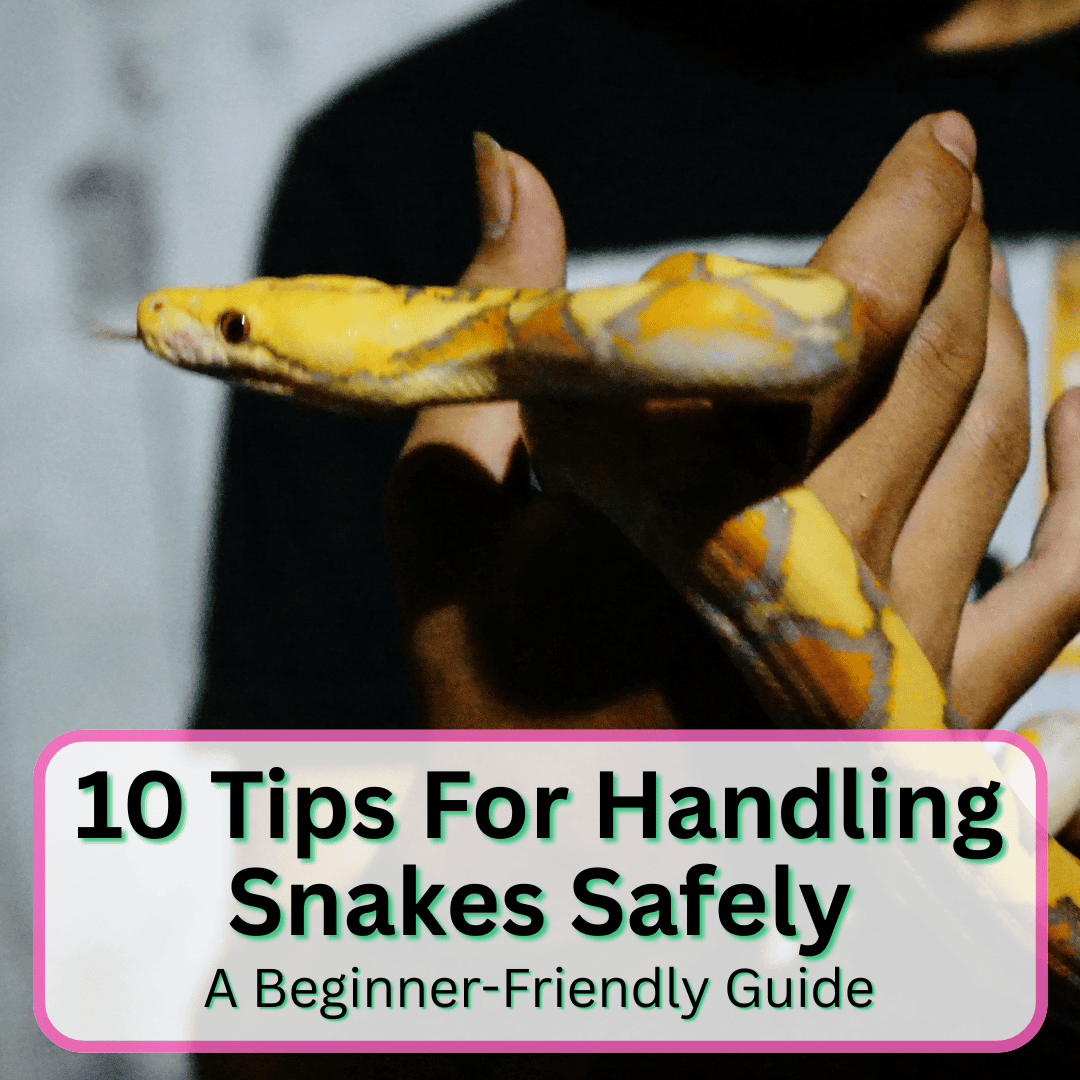
If you do it right.
But that takes some know-how and prep.
It’s totally normal to feel a bit nervous around snakes—honestly, that little bit of fear can keep you sharp and careful.
With the right techniques, you can handle snakes confidently and safely.
Whether you keep pet snakes, study them, or just bump into snakes outside, knowing how to handle them matters.
You’ll want to get familiar with the right tools, some protective gear, snake body language, and what to do if things go sideways.
Tips For Handling Snakes Safely
Mishandling is one of the most common mistakes when caring for pet snakes. Follow these tips and you will be handling snakes like a pro in no time. That means you and the snake can relax and know you will stay safe and not be harmed in any way.
1. Always Use Snake Handling Tools Like Hooks Or Tongs For Safety
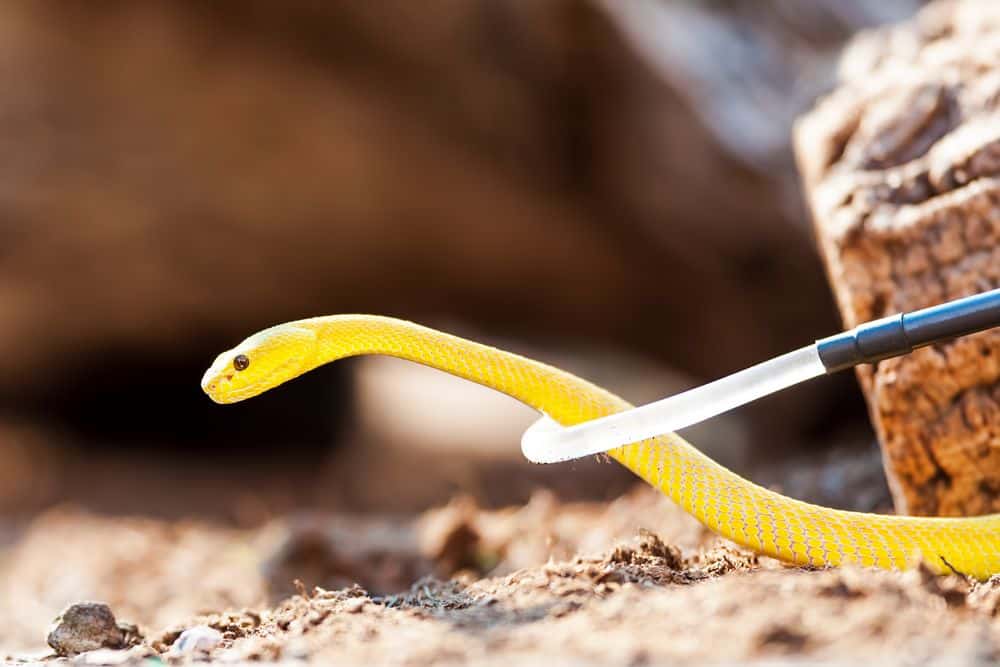
Snake hooks and tongs really are your go-to when you need to move a snake. They keep your hands well away from those teeth and fangs. Don’t pick up a snake bare-handed—even the friendliest ones can bite if they’re startled.
Hooks are great for lifting and moving snakes. That long handle? It gives you a comfortable buffer from the business end.
Tongs let you grab a snake firmly if you need to. Look for rubber-tipped ones so you don’t hurt your scaly friend.
Pick tools that suit the size of the snake. Bigger snakes? Go for longer hooks and tongs.
Have your gear ready before you get close. You don’t want to be fumbling for tools while a snake is right in front of you.
Try practicing with your tools before you ever use them on a live snake. It’ll help you feel more at ease when the time comes.
Clean and check your tools regularly. Damaged or dirty equipment can cause accidents for both you and the snake.
2. Wear Thick Gloves And Protective Clothing Before Handling
Thick gloves are your best defense against bites—non-venomous snakes can still break the skin. Go for puncture-resistant gloves made for snake handling. Garden gloves just don’t cut it.
Long sleeves matter too. A sturdy, long-sleeved shirt keeps your arms safer from sudden strikes. Wear pants and high-top boots for extra coverage on your legs and ankles.
Don’t skip the safety gear, even if you think the snake is chill. Any snake can bite if startled.
Check your clothes and gloves for holes or worn spots before each use. Even a tiny tear can be a problem.
Your gear should fit well—too loose and you’ll fumble, too tight and you can’t move right.
Keep an extra pair of gloves handy. If your main pair gets ripped, swap them out right away.
3. Learn To Identify Venomous Vs Non-venomous Snakes
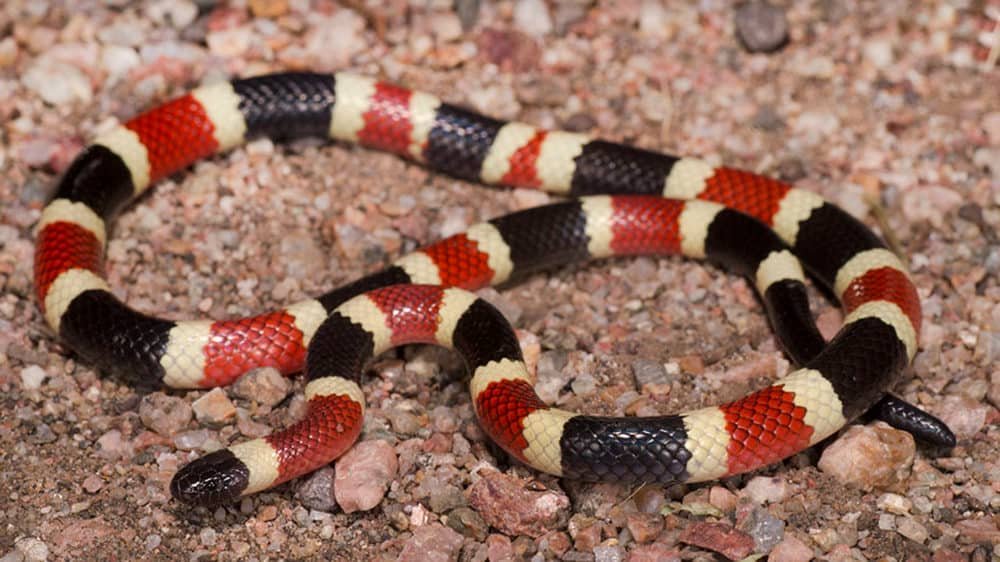
Most snakes you come across aren’t venomous. Only a small percentage are dangerous to humans.
Start by learning which venomous snakes live near you. That’s the best way to avoid trouble.
Check the shape of the head—many (but not al) venomous snakes have wide, triangle-shaped heads. Non-venomous ones tend to have slimmer heads.
If you can see the eyes safely, look at the pupils. Venomous snakes in North America often have vertical, cat-like pupils. Non-venomous snakes usually have round ones.
Patterns and colors can help, but be careful—some harmless snakes mimic the look of venomous ones.
Pit vipers have heat-sensing pits between their eyes and nostrils. Most non-venomous snakes don’t.
Rattlesnakes give a warning rattle when threatened. That’s a sound you don’t forget.
Don’t rely on just one clue. Use as many hints as you can to make a call. If you’re not sure, act like the snake is venomous and keep your distance.
4. Never Handle A Snake If You’re Unsure About Its Temperament
Don’t pick up a snake if you don’t know how it’s likely to react. Each has its own mood and quirks. Some snakes are calm and used to people. Others get jumpy or defensive if you touch them.
Watch from a safe distance first. Hissing, tight coiling, or striking at the air? Those are big red flags.
If the snake looks stressed or agitated, leave it alone. Even a harmless snake can bite if it feels cornered.
A snake that just ate, shed, or moved to a new spot might be extra cranky. These changes can make them unpredictable.
If you’re unsure about its mood, just wait. Give it time to settle down before you try anything. If you have to move the snake, use a hook or long grabber, not your hands. That way, you stay out of harm’s way.
5. Acclimate Young Snakes Slowly To Being Held
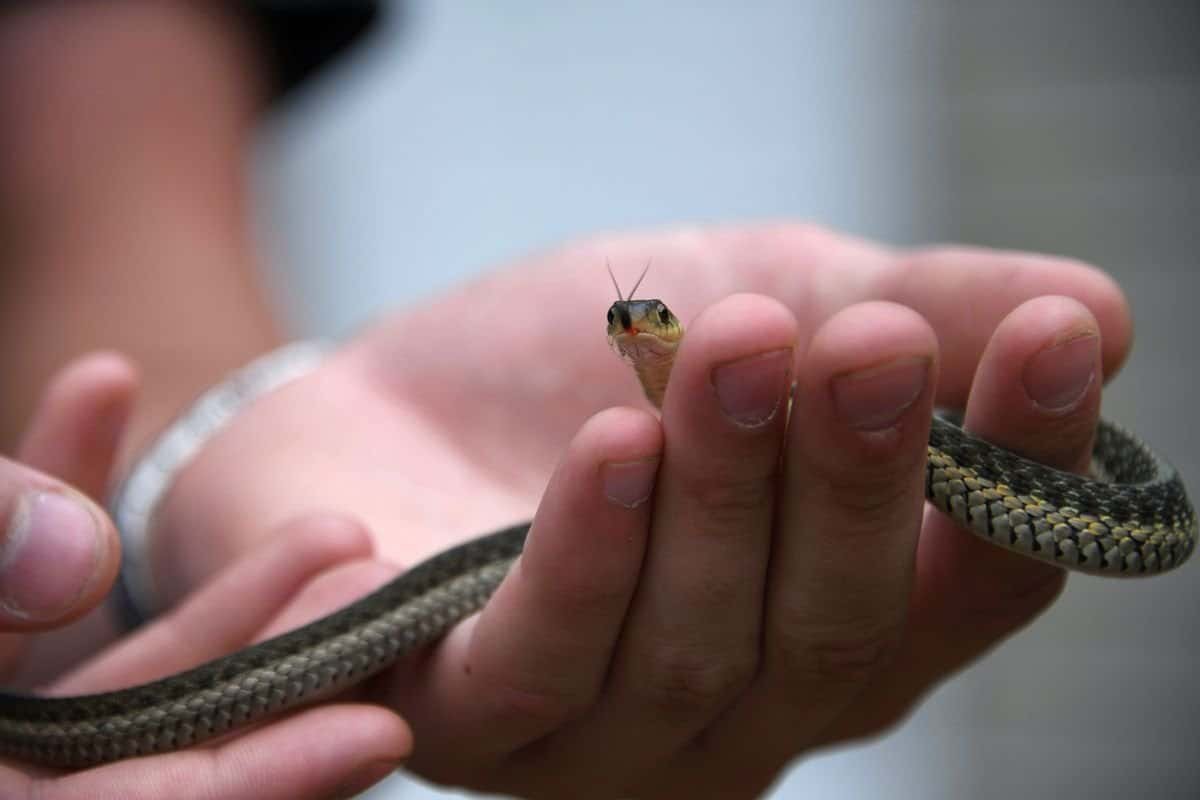
Young snakes aren’t used to people. They need time to get comfortable with being touched. Rushing it just makes things harder for both of you.
Let your new snake settle into its enclosure for at least a week. Don’t try to pick it up during this time—it needs to feel at home first.
Start with super short handling sessions. Two or three minutes is enough at first. Move slowly and be gentle.
Pay attention to body language. If your snake tries to hide, darts away, or stays stiff, put it back. That means it’s stressed.
As your snake gets more relaxed, you can handle it a bit longer each week. Some snakes take a while—it’s not a race.
Handle young snakes every few days, not every day. Too much can overwhelm them. Let them rest between sessions. Patience pays off. Building trust with your snake takes time, but it’s worth it.
6. Support The Snake’s Body Fully To Reduce Stress
Use both hands to support your snake’s body when you pick it up. That gives it a sense of security.
Hold the middle with one hand and support the back end with your other hand. Never grab just the head or tail. That can hurt or scare your snake.
Let the snake’s weight rest in your hands. Don’t squeeze—think of holding a flexible garden hose.
Try to support as much of the snake’s body as you can. That way, it doesn’t feel like it’s about to fall. When a snake feels secure, it’s usually much calmer and less likely to bite or bolt.
Move slowly if you need to adjust your grip. Fast movements can spook even a calm snake.
If your snake is really long, use more of your arm or ask someone to help. The goal is always full support.
7. Avoid Sudden Movements While Holding A Snake

Snakes react badly to quick or jerky movements. If you move fast, they might see you as a threat. Move slowly and smoothly when you’re holding your snake. It helps them stay calm.
Fast movements stress snakes out and make them more likely to bite or try to escape. Gentle, steady movements build trust over time.
If you need to shift positions, do it gradually. Avoid sharp turns or sudden moves while holding your snake. Try to stay relaxed. Your snake can pick up on your tension.
Moving smoothly also helps you keep better control, which keeps both of you safer. Practice slow movements before you pick up your snake—it really helps you find the right pace.
8. Keep The Handling Area Quiet And Low Stress
Pick a quiet, calm room for handling. Loud noises or sudden sounds can make your snake jumpy.
Keep other pets out. Dogs, cats, and other animals just add stress for your snake. Use a spot with little foot traffic. Too many people walking by can make a snake uneasy.
Check the room’s temperature. Cold snakes get sluggish and might act defensive.
Turn off TVs, radios, and anything else noisy. The quieter, the better. Close doors to keep distractions out. It makes the whole thing safer and less chaotic.
Try handling during naturally quiet times at home—early morning or evening usually works well.
Go for soft, gentle lighting. Bright lights can stress some snakes and make them want to hide. A calm space helps your snake relax, making handling safer and more pleasant for both of you.
9. Have An Emergency Plan In Case Of A Bite
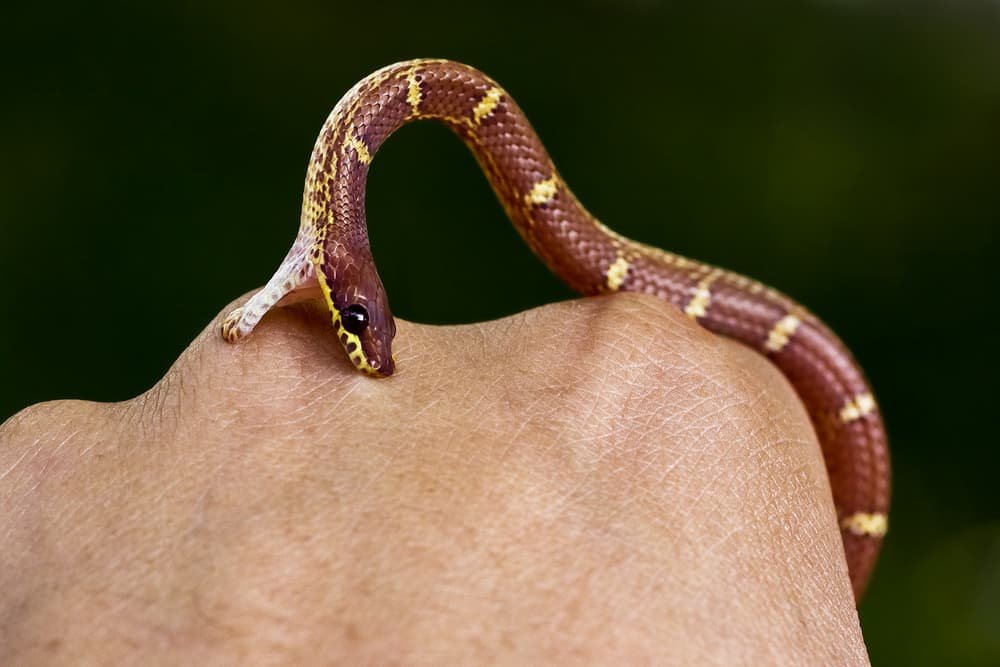
Have a plan before you handle any snake. Know where the closest hospital is and whether they have antivenom. Save important numbers—poison control, emergency services—in your phone and write them down somewhere obvious.
Let someone else know your plan. Make sure they know what to do if you’re bitten. Run through the steps with them so they’re ready.
Keep a first aid kit nearby. Stock it with clean bandages and antiseptic—skip the tourniquet and ice packs.
Know the fastest way to the hospital, and have a backup route in mind. You never know when traffic or road work will slow you down.
If you handle venomous snakes a lot, talk to your doctor about keeping antivenom at home. It’s not simple—you’ll need training and special storage.
Write down your emergency steps and post them somewhere visible. That way, no one has to scramble if something happens. Every minute counts with snake bites. The faster you act, the better your odds.
10. Wash Hands Before And After Handling To Prevent Disease
Washing your hands is the best way to stop germs from spreading. It protects you, your family, and your snake. Wash up before you handle any snake. That gets rid of dirt and oils that could stress your pet or mess with your grip.
Always wash your hands right after handling, too. Snakes can carry bacteria like salmonella. Use warm water and soap for at least 20 seconds. Get between your fingers and under your nails—germs love hiding there.
If you can’t get to soap and water, use hand sanitizer with at least 60% alcohol. Still, soap and water work best for most germs. Don’t touch your face, eat, or handle food until you’ve washed up. That’s how germs sneak in.
Good hand washing keeps a lot of illnesses at bay, from stomach bugs to colds. It’s a tiny step that makes snake handling way safer.
Understanding Snake Behavior
Snakes show pretty clear signals when they’re stressed or threatened. If you learn to spot these, you’re much less likely to have any scary moments.
Common Signs Of Distress

Watch for these signs your snake is upset: A stressed snake might coil up tight in a defensive posture, or pull its head back in that classic S-shape, ready to strike.
Hissing is a big warning. Your snake’s telling you to back off. Some will even vibrate their tails if they feel cornered.
Physical signs to keep an eye on:
- Stiff, tense body
- Flattened or puffed-out neck
- Sudden, jerky movements
- Constantly trying to hide or escape
Heavy breathing or panting means your snake is really stressed. Sometimes they’ll leave their mouth open longer than usual. Their colors might even darken as stress hormones kick in.
If your snake skips meals for a few days or seems less active, it might be stressed. Pay attention to changes in behavior—they’re often a clue something’s off.
How Snakes Respond To Human Interaction
Most snakes really just want nothing to do with people. If you walk up, they’ll usually try to slip away first. Only if they can’t escape do they get defensive—who can blame them?
Typical snake responses:
- Flight: Darting away fast
- Freeze: Staying stock-still, hoping you don’t notice
- Fight: Coiling up, maybe ready to strike if pushed
Young snakes tend to put on more of a show than adults. They haven’t figured out yet that not everything’s out to get them. If you have to handle them, go slow and be extra patient.
Various species definitely have their quirks. Ball pythons curl up tight, almost like they’re hiding from the world. Corn snakes might wriggle out of your hands and try to climb away. King snakes? Sometimes they just stink up the place with that musky smell.
The time of day can make a big difference. A lot of snakes chill out during daylight and don’t move much. If you catch them when they’re less alert, they’re often easier to handle—not that there’s ever a totally predictable snake.
Essential Tools And Safety Gear
The right gear can really make or break a safe encounter. Good snake hooks and solid protective clothing are the basics—don’t skip them.
Choosing The Right Snake Hooks
Snake hooks are the main tool for safe handling. With a hook, you keep your distance and stay out of striking range.
- Hook length is key. Always use a hook at least as long as the snake. For venomous ones, go for 60 inches or more. Better to have too much reach than not enough.
- Material and build matter. Lightweight aluminum or stainless steel hooks feel better in your hand and last longer. The tip should be smooth and rounded—no one wants to hurt the snake, right?
| Snake Size | Hook Length | Best Use |
|---|---|---|
| Under 3 feet | 24-36 inches | Small non-venomous species |
| 3-6 feet | 48-60 inches | Medium snakes, most species |
| Over 6 feet | 60+ inches | Large or venomous snakes |
Give your hook a quick check before each use. Look for any wobbly joints or cracks. A broken hook in the middle of handling? Not worth the risk.
Some folks like collapsible hooks since they’re easy to carry. They work, just make sure the locking part isn’t about to fail on you.
Wearing Proper Protective Clothing
Your clothes are your backup if a snake gets too close. Cover every spot a bite could land.
- Thick boots are a must for your feet and lower legs. Go for leather boots that reach your mid-calf. Thin shoes just won’t cut it—fangs go right through.
- Sturdy pants help block bites. Denim or canvas pants do the job. Leave the shorts or thin fabrics in your closet for this one.
- Gloves are tricky—choose wisely. Thick leather gloves stop some bites, but you lose a lot of feel and grip. Honestly, a lot of experienced handlers skip gloves and just rely on their tools and careful hands.
- Eye protection? Definitely a good idea with jumpy snakes. Some species will go for your face. Safety glasses can save your eyes from a nasty surprise.
- Loose clothes are a hassle. They catch on everything. Stick to snug stuff that lets you move but keeps you covered.
Safe Snake Handling Tips: Conclusion
Following these safety tips can give you more confidence when handling snakes. Practice really does help, but it’s best to start slow and stay patient with yourself.
Your safety should always come first. Don’t rush, even if you’re working with a snake you know pretty well.
Trust takes time with any snake. Practicing good handling skills makes things smoother for both you and your snake, honestly.
Keep learning about snake behavior and body language—there’s always something new. Every snake has its own quirks, so it’s worth noticing what your particular snake prefers.
Have your tools ready before you begin. The right equipment just makes things easier and safer, for you and the snake.
Key reminders for safe handling:
- Move slowly and keep calm
- Support the snake’s body well
- Watch for signs of stress
- Know your escape plan
- If you’re new, don’t handle alone
Respect the snake as a living creature. When you show respect and use solid techniques, handling can actually be a good experience.
Give yourself time to learn. Everyone starts somewhere, and even experienced handlers had to figure things out at first. With patience and practice, you’ll get more comfortable and safer with handling snakes.
Leave a Reply